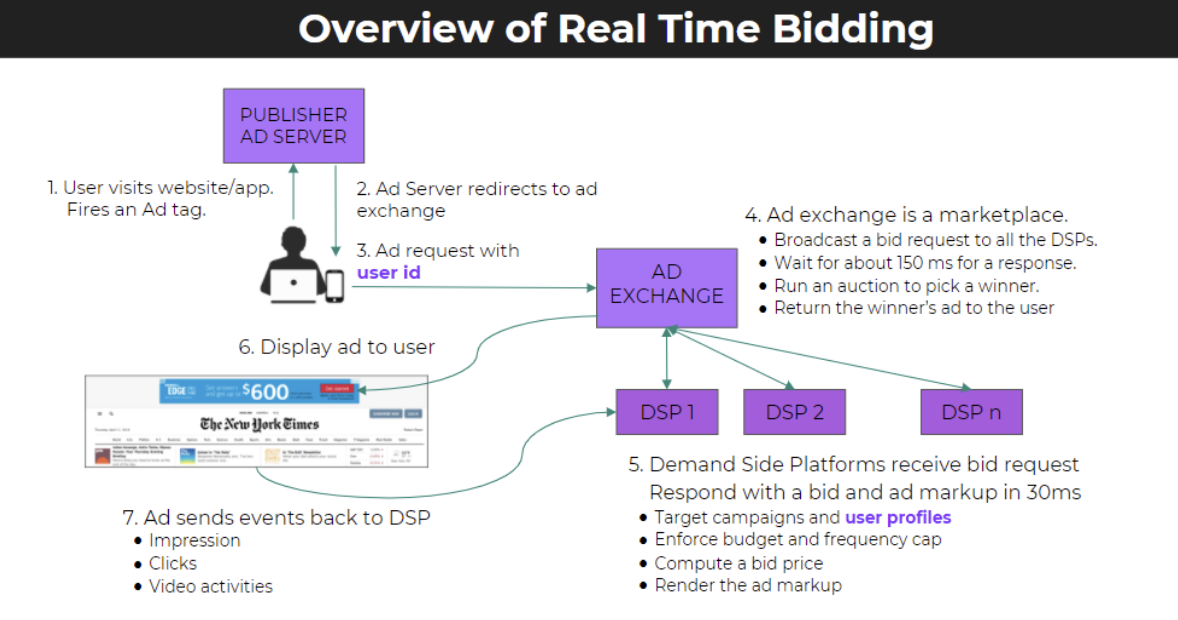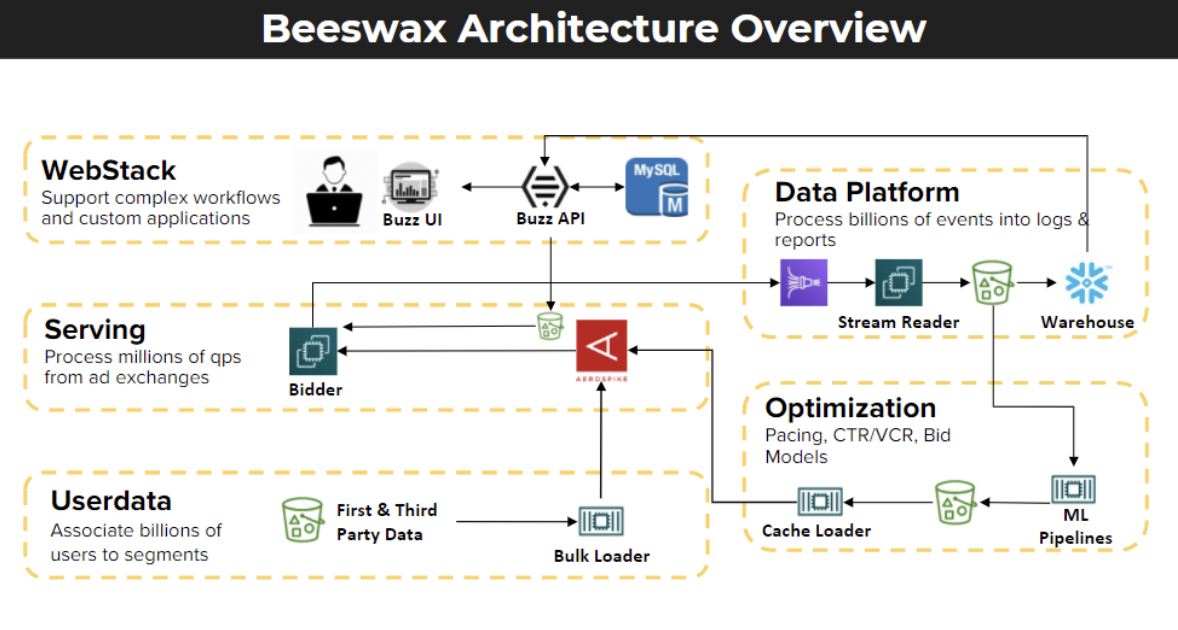In a recent webinar, Ram Kumar Rengaswamy, VP Engineering at FreeWheel, a Comcast Company; Gerry Louw, Head of Worldwide Solutions Architecture at AWS; and Srini Srinivasan, Chief Product Officer and Founder at Aerospike discussed how Freewheel used a real-time data platform to predictably scale their business by running Aerospike on AWS.
As a rapidly growing company whose business needed to be able to scale up and down very quickly, Beeswax (a subsidiary of Freewheel, a Comcast company) recognized the need to choose the correct technology from the start due to Ad Tech’s speed and scaling requirements. Ram advises others, “Be very careful of your technology choices. Engineering resources are scarce, so as they depend on using the technology, one affects the other.”
In the webinar, two topics jumped out as being essential to 10X growth: achieving speed at scale and managing costs at scale.
Achieving Speed at Scale
High performance at high scale is paramount in Ad Tech. For example, Beeswax receives three million ad requests per second. Each ad request needs to be responded to in tens of milliseconds. Their service level agreement is to respond to each in a maximum of thirty milliseconds. This is important to know because other industries, like consumer apps, retail and finance, have the luxury of time to grow into this performance at scale. But successful Ad Tech companies need to handle this scale on day one.

So how did Beeswax approach the problem of speed at scale? Here is what Ram had to say, “Your system has to be distributed to handle the sheer volume of incoming requests. It needs to access compute capacity, especially if there are a huge surge of requests. Spinning up compute quickly is the key. Knowing this, we decided to build our architecture in the cloud from the get-go.”
In addition, a real-time database like Aerospike’s is critical because bidding has to be fast. Low latency is needed for bidding systems in real-time. You only have thirty milliseconds for the data. As Srini points out, “Aerospike invented HMA where indexes are stored in DRAM and data persists in Flash where it is accessible in sub-millisecond read times. This is essential to supplying enough data to make decisions in real time.” In addition, with Aerospike you can look at more data in a shorter amount of time using APIs in real time, allowing you to synchronize data between the edge and the core. With more data, you can make better decisions and be more profitable.
Managing Costs at Scale
Managing costs at scale is essential to being profitable in Ad Tech. Recognizing this, Beeswax focused on building a solution that could both scale up and down based on load coming into the system. For them, the daily pattern is usually high during the day and lower at night, so they designed their system using Amazon AWS so that compute capacity matched the demand. As Gerry put it, “Scale needs to be managed up and down very quickly, and not by deploying new hardware.”

By leveraging a cloud solution like AWS, Beeswax could start small with no upfront capital investment and, at the same time, scale up without having to go out and buy new hardware to deal with peak loads. In addition, by using Aerospike (which is able to leverage Flash for performance and not rely on DRAM), they could run five times fewer nodes. This not only lowered complexity, but also the manpower needed to manage the environment. As Srini puts it, “Customers typically reduce server footprint by 80% even as business and data grows.”
These are just a couple topics that were covered in the hour-long webinar. Watch the complete webinar here to learn about all four ways a real-time data platform will enable 10X growth in addition to learning more about how the Beeswax solution is architected to deliver such high performance at scale. Lastly, learn the number one question you should be asking yourself as an Ad Tech Leader!




